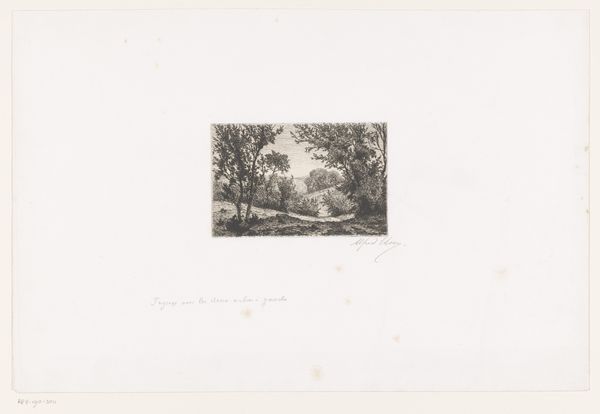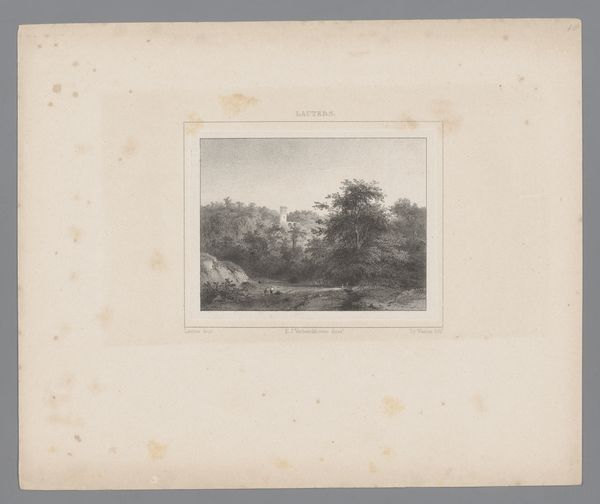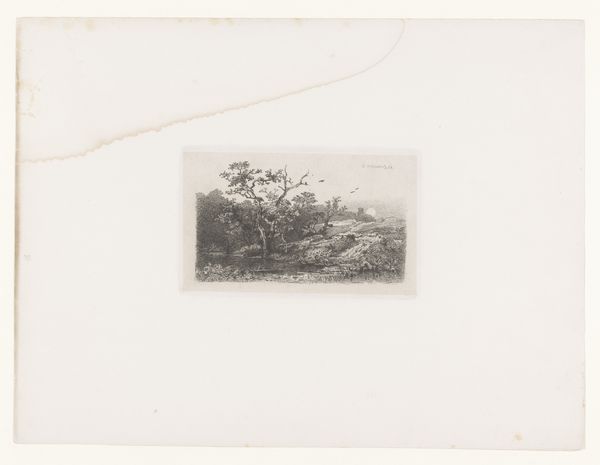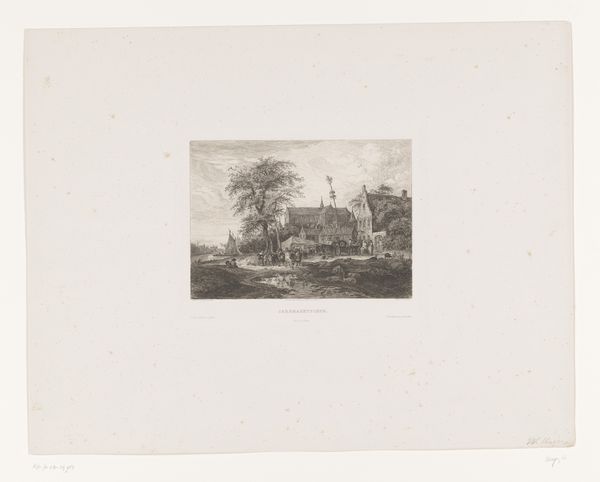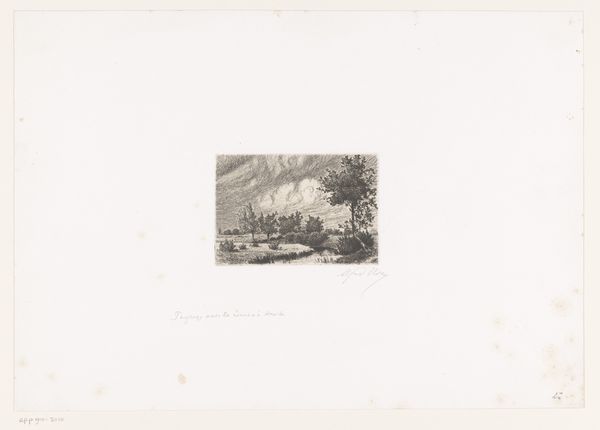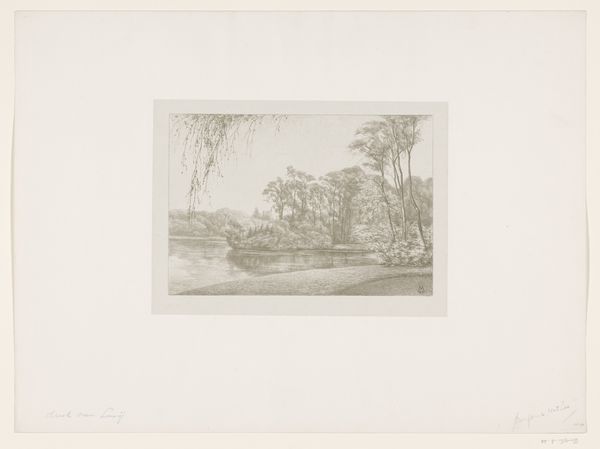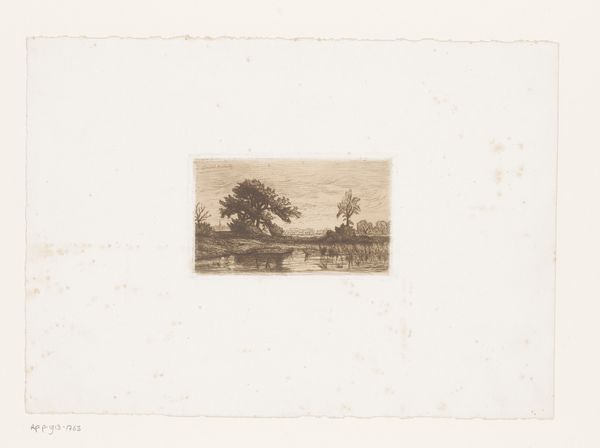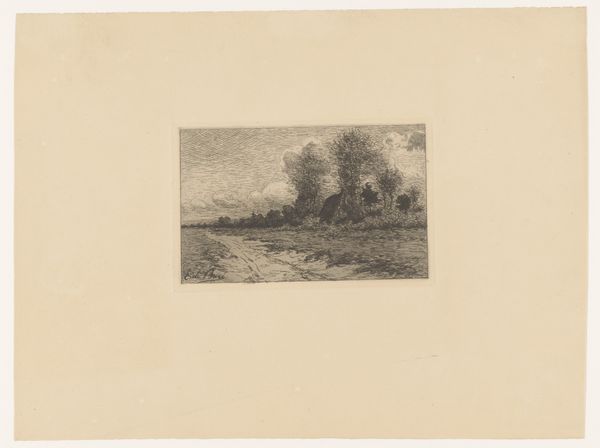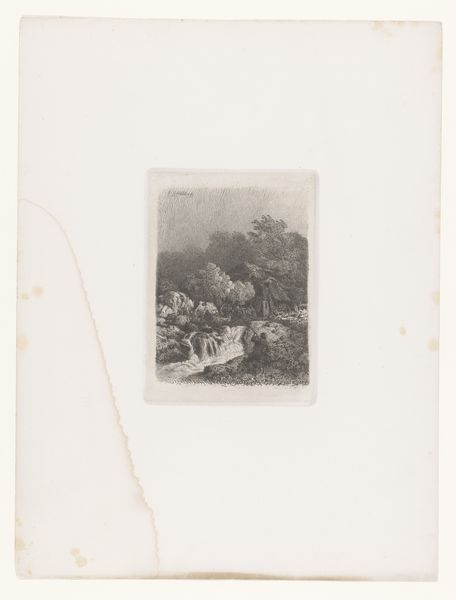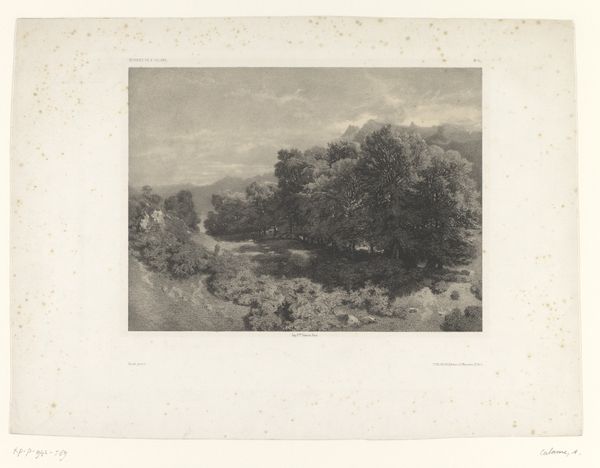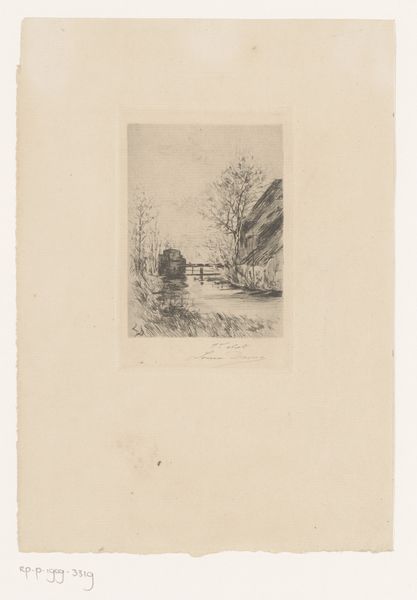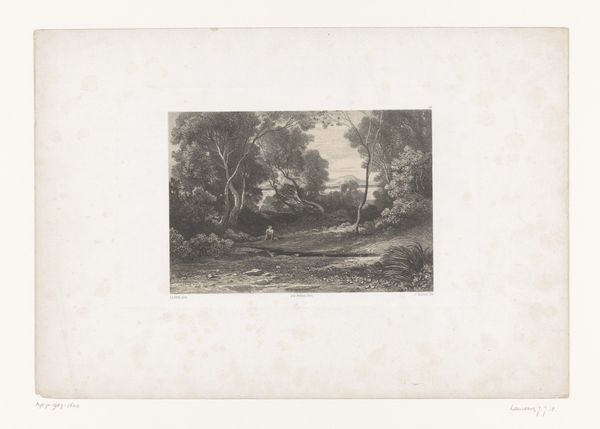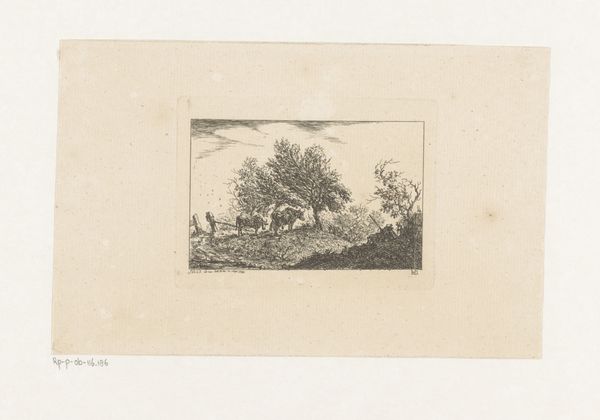
Lage stenen muur met een pad door het midden naar een boompartij 1816 - 1875
0:00
0:00
drawing, print
#
drawing
# print
#
landscape
#
romanticism
#
watercolor
Dimensions: height 69 mm, width 107 mm
Copyright: Rijks Museum: Open Domain
Curator: Welcome. We're looking at "Low Stone Wall with a Path Through the Middle to a Group of Trees," an artwork by Paulus Lauters, dating sometime between 1816 and 1875. It is currently held in the Rijksmuseum. Editor: Hmm, instantly I'm struck by the quietness. The muted tones and the almost miniaturist scale of it give a feeling of stepping back in time, finding a secret garden tucked away from the world. There's a touch of melancholy there too, isn’t there? Curator: Lauters, who situated himself within the Romanticism movement, often sought to evoke very specific sentiments in the viewer through carefully composed landscapes like this one. Romanticism certainly embraced that kind of introspection. Editor: I see the Romantic influence clearly – that wistful connection to nature, but also, I can't help but think about access. That low wall with the path – who is it inviting in, and who is it keeping out? Or is it merely there as a symbolic border? Curator: The artwork's history reveals that it was created during a time of increasing urbanization and industrialization in Europe. Artists of the era, faced with those monumental socio-economic changes, often created idyllic landscapes like these to express a yearning for simpler, rural life. This also reflects certain landowners who saw that way of life at threat, commissioning artists like Lauters to capture their land. Editor: So, it’s a bit of a political statement, a gentle resistance, captured in watercolor. It is not lost on me that a seemingly humble print and drawing carries layers of meaning, acting as more than just a depiction of land. I feel like that wall becomes quite central to the meaning – like you said – perhaps commissioned as a message for both belonging and for distance. Curator: Indeed, this work participates in the complex politics of imagery during that era. By depicting nature as sublime, but controlled— with this walled landscape--Lauters constructs an image steeped in cultural and social ideals. The wall has more to say than simply being a physical marker in a landscape. Editor: It all just leaves me feeling more and more contemplative. Every time I view artworks like these, my impression changes. It shows me that history lives in art; art, in history. Curator: Yes, looking at art and its history shows us more about the moment it captured. Editor: It really does. A little wall can be mightier than you think.
Comments
No comments
Be the first to comment and join the conversation on the ultimate creative platform.
